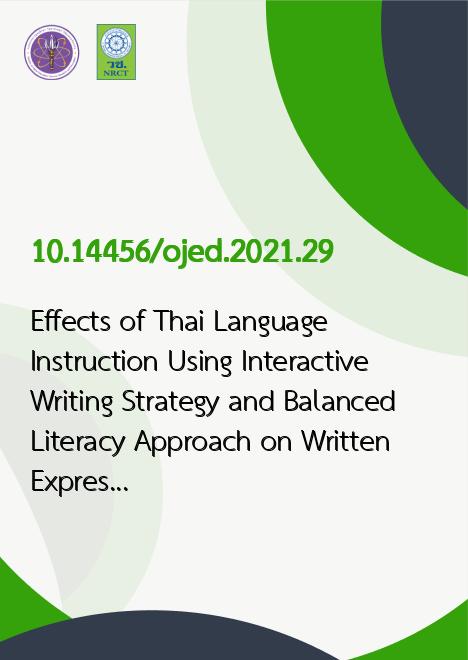
|
Effects of Thai Language Instruction Using Interactive Writing Strategy and Balanced Literacy Approach on Written Expression Ability of First Grade Students |
|---|---|
| รหัสดีโอไอ | |
| Creator | Sirodom Juypaim |
| Title | Effects of Thai Language Instruction Using Interactive Writing Strategy and Balanced Literacy Approach on Written Expression Ability of First Grade Students |
| Contributor | Worawan Hemchayart |
| Publisher | Centre for Education Innovation, Print and Online Media |
| Publication Year | 2564 |
| Journal Title | An Online Journal of Education |
| Journal Vol. | 16 |
| Journal No. | 2 |
| Page no. | OJED1602013 (12 pages) |
| Keyword | Thai language instruction, ininteractive writing strategy, written expression ability, balanced literacy approach, first grade students |
| URL Website | https://so01.tci-thaijo.org/index.php/OJED |
| Website title | An Online Journal of Education |
| ISSN | ISSN 1905-4491 (Online) |
| Abstract | The purposes of this quasi-experimental research were: 1) to study the effects of Thai language instruction using interactive writing strategy and balanced literacy approach on written expression ability of first grade students; 2) to compare the effects of Thai language instruction between the experimental group and the control group. The samples were 50 first grade students studying in the second semester in the 2020 academic year at Watthatthong school under department of education Bangkok metropolitan administration. Room 1/1 was the experimental groups and 1/2 was the control group. Each consisted of 25 students. The experimental duration was 10 weeks. The data collection was through the writing expression ability test. Data analysis was statistically analyzed using arithmetic mean, standard deviation, T-test. The research finding were: 1) after the experiment, the experimental group had higher mean scores in written expression ability than those of before at 0.5 level of significance; 2) after the experiment, the experimental group had higher mean scores in written expression ability than those of the control group at 0.5 level of significance. |